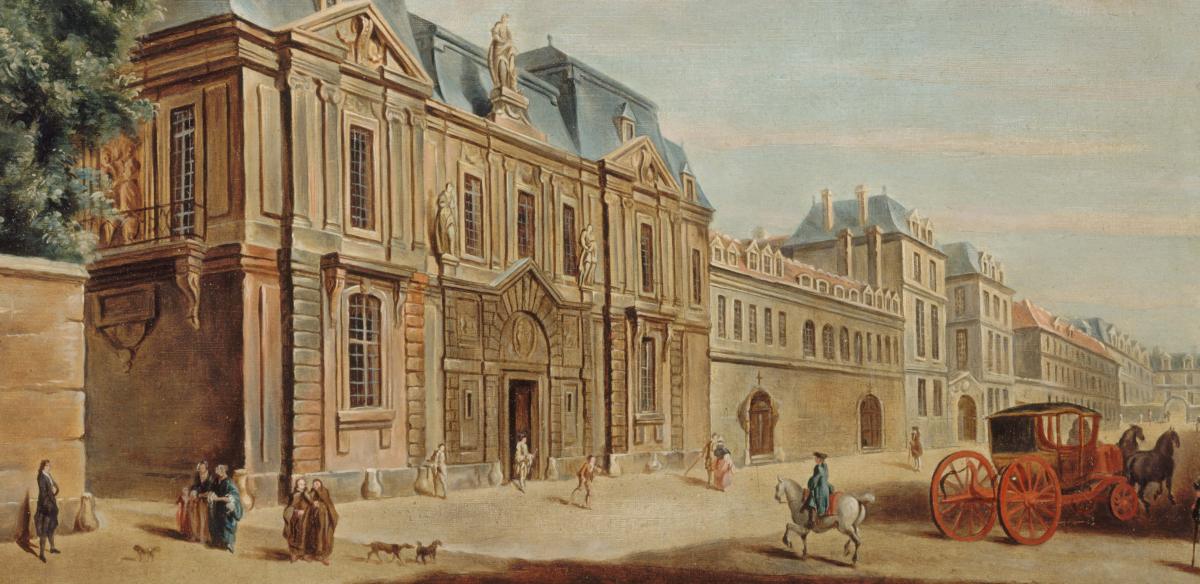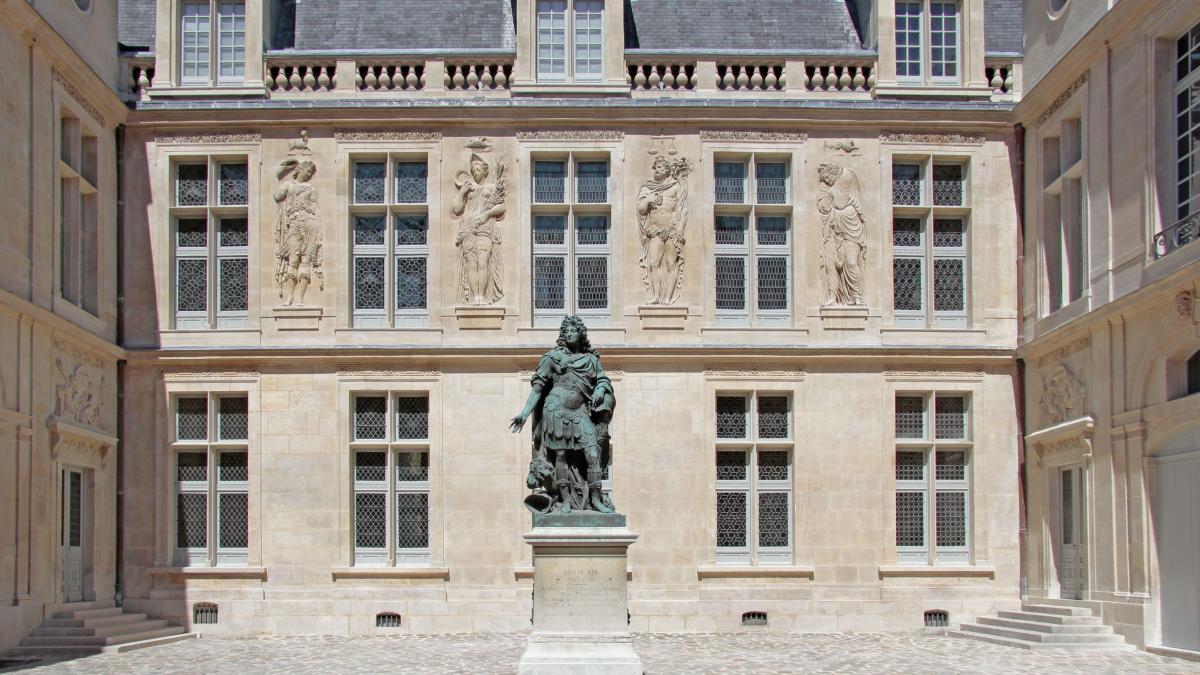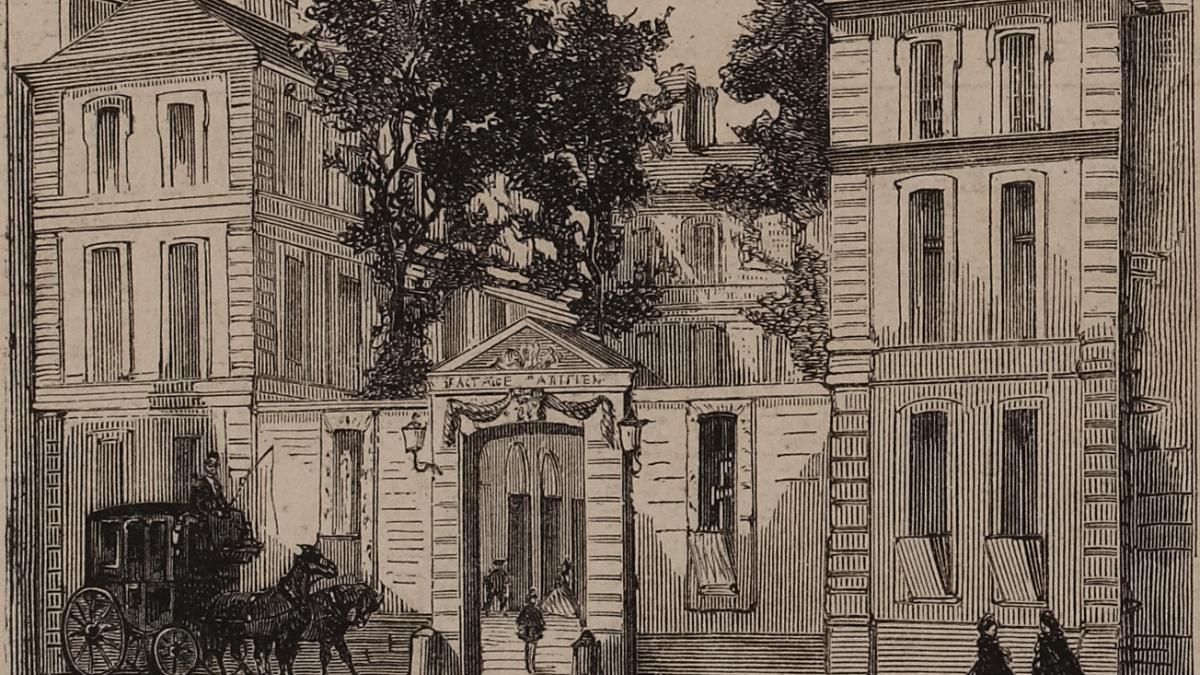History

© Paris Musées / Musée Carnavalet - Histoire de Paris
The Carnavalet-History of Paris Museum is the oldest City of Paris museum.It opened to the public on February 25, 1880, in the Carnavalet mansion (Hôtel Carnavalet) located in the Marais, a Paris district where the architectural heritage was particularly well-preserved.
Since 1880, the museum has been substantially enlarged, with the construction of new buildings and the annexation of the Le Peletier de Sant-Fargeau mansion in 1989. The museum’s architecture now offers a history spanning more than 450 years. For over 150 years, the continuously enriched museum collections have told the story of Paris, from prehistory to the present.
Two private mansions

© Musée Carnavalet - Histoire de Paris
Located at 23 Rue de Sévigné, the Hôtel des Ligneris (known as “Carnavalet”) is one of the rare examples of Renaissance architecture in Paris, along with the Louvre’s Cour Carrée. Built in the mid-16th century (1548-1560) for Jacques des Ligneris, President of the Paris Parliament, it is one of the oldest Marais District private mansions in Paris.
The mansion was sold in 1578 to Françoise de la Baume, wife of Chevalier Kernevenoy, who was called “Monsieur de Carnavalet”. This deformation of “Kernevenoy” became the established name.
Starting in 1660, the celebrated architect François Mansart raised the mansion’s porch on what is now Rue de Sévigné and created two new wings. Madame de Sévigné, the writer, lived there from 1677 to 1694.
Finally, following a suggestion by Prefect Haussmann during the major renovation of Paris (1853-1870), the mansion was purchased by the City of Paris in 1866 and made into the capital’s historical museum.
An extension of the museum was immediately decided upon and included two-tiered galleries. The façades opening on the garden feature elements from demolished Parisian buildings: the Nazareth Arch from the 16th century, the Pavillon des Drapiers from the 17th century, and the Pavillon de Choiseul from the 18th century. Several sculptures have also been transplanted from their original site to the museum, such as the statue of King Louis XIV by Antoine Coysevox, the bas-relief of Henry IV by Lemaire (formerly found at Paris City Hall), and the statue of Victory by Louis-Simon Boizot (from Place du Châtelet). Inside, the exhibition pathway includes painted ceilings and sculpted panels, as well as decorative wood paneling from Parisian interiors.
The Hôtel Le Peletier de Saint-Fargeau is located at 29 rue de Sévigné. It was built between 1688 and 1690 for Michel Le Peletier de Souzy (1640-1725), according to plans made by Pierre Bullet (1639-1716), Architect of the King and the City, and has a remarkable orangery. These buildings were annexed to the museum in 1989. This was also the time when Fouquet’s Jewelry Shop by Alphonse Mucha, the dining room of the Café de Paris by Henri Sauvage and the ballroom of the Wendel Mansion by José-Maria Sert were installed.
In October 2016, the museum was closed to the public for a major renovation carried out by François Chatillon, Chief Architect for Historical Monuments. This major cultural heritage site has been justifiably protected as a Historical Monument since 1846 and has been included in the Marais Protection and Promotion Plan since 1965.
Showcased in an exceptional historical setting and within the reach of all types of audiences, the Carnavalet-History of Paris Museum now opens again.

© Musée Carnavalet - Histoire de Paris / Ville de Paris
Key dates
- 1548-1560: Construction of a private mansion for Jacques des Ligneris, President of the Paris Parliament.
- 1660: The mansion is completed by the celebrated architect François Mansart, who raises the porch on the current Rue de Sévigné façade.
- 1677-1696: Madame de Sévigné and her family live in the mansion.
- 1688: Pierre Bullet, Architect of the King and the City, builds the Hôtel Le Peletier Saint-Fargeau.
- 1866: The Hôtel Carnavalet is acquired by the City of Paris.
- 1880: The Carnavalet Museum is opened to the public.
- 1989: The Hôtel Le Peletier Saint-Fargeau is annexed to the museum.
- 2015: Start of complete removal of the collections.
- 2016: Closing of the museum and completion of the removal of the collections.
- Mid-2017: Beginning of renovation.
- March 2021: Reopening of the museum.
Collections that have been continuously enriched for over 150 years
With the growth of Paris, the idea of a museum dedicated to the history of the city became popular during the Second Empire (1852-1870). In 1866, the municipality acquired the Carnavalet mansion on the initiative of Seine Prefect Haussmann, perhaps as a way of compensating for the partial destruction of Paris. It was meant to house a new institution designed to document Paris, while paying particular attention to how the collections would be presented.
Since the beginning, the museum has been dedicated to collecting authentic objects “having belonged to” a well-known person and with a strong individual and collective emotional resonance. The Carnavalet Museum features, among others, the campaign kit belonging to Napoleon I, mementos of the French royal family and the revolutionaries, Zola’s watch and the bedroom and personal affairs of Marcel Proust.
Two pioneering missions that aimed to document the transformations of Paris also provide a solid framework for the museum. Supervision of diggings and demolitions thus added nearly 10,000 archeological items to the museum, while commissions for paintings or photographs of streets and neighborhoods have been included in the collections.
Donations are the main means of acquisition. Since the museum’s creation, tens of thousands of donors have contributed to building and enriching the collections, currently divided among ten departments. The first donors (Jules Cousin, Théodore Vacquer and Alfred de Liesville) even worked for the Carnavalet Museum!
Outstanding donations include Georges Clemenceau’s gift in 1896 of a painting that had belonged to his father. Entitled Declaration of the Rights of Man and of the Citizen, it is attributed to Jean-Jacques Le Barbier. In 1902, Empress Eugénie, the widow of Napoleon III, donated the crib designed for the Imperial Prince by Victor Baltard.
Today the Carnavalet-History of Paris Museum contains over 618,000 items dating from prehistory to the present. Paintings, sculptures, scale models, shop signs, drawings, engravings, posters, medals and coins, historical objects and souvenirs, photographs, wood paneling, interior decorations and furniture combine to present the history and tell the unique story of the capital. The singular spirit of the site ensures a rich, emotion-filled experience.